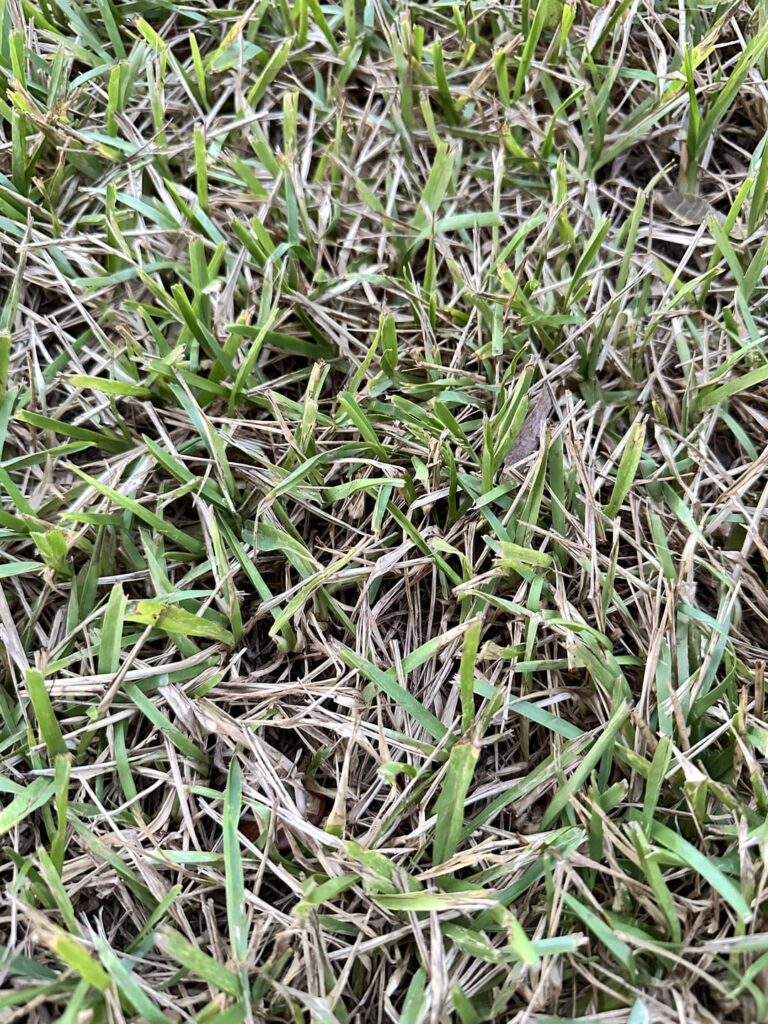


St Augustine. Had a bad case of fungus, and also was not on top of my watering for quite awhile. I’ve been watering 3 times a week this past week starting around 5 am and getting a good 3/4 inch each time, trying to bring it back. Will it bounce back and if so how long to bounce back? any other recommendations?
by KickingKangeroo


2 Comments
Lightly rake to allow the grass to breathe
Water
Will come back
Heat stress
I see more issues than disease and fungicide, so let’s hit them all:
**Irrigation:** 3/4″ three times a week is too much with a history of disease injury and what will soon be a significant amount of decomposing plant material. I’d back off to 3/4″ twice a week and a bit later in the morning. You want to finish watering the moment the sun touches the foliage when recovering from drought stress combined with disease.
**Fertilization:** I’d also do a split fertilizer application. Use 1/2 the normal rate of a 24-0-10 fertilizer, wait two weeks, and apply the remaining 1/2. Regardless of the false rumor that nitrogen causes disease, the point is to avoid a rapid push of new top-end foliage while encouraging a slower, more gradual growth while your turfgrass overcomes the drought and disease.
**Mowing:** You’ll also want to mow higher for the next few weeks to encourage plant recovery by allowing more foliage surface area, but definitely bag your clippings until October. I’d suggest a height of about 3.5″ to 4.0″ for you. If you’re so inclined and want to maximize your results, install a high-lift blade on your mower and keep it sharp.
**Pest management:** In your case, you’ll likely see a return of the disease, or even new disease, as fall approaches. I’d unenthusiastically recommend two rounds of preventative fungicide ASAP. The first application needs to be about a week after fertilizing. The second needs to be about three weeks later. If you know what disease your turfgrass had, you can tailor your fungicide to that particular disease. If you’re not sure, Syngenta Headway G will be your best option considering azoxystrobin and propiconazole target the most common St. Augustinegrass pathogens. Use Headway G in your first round, and then shift to either Fame G or Pillar G for your final round to target the most likely diseases that will take advantage of your injured turfgrass as fall approaches. Apply both at the preventative or lowest recommended rates.